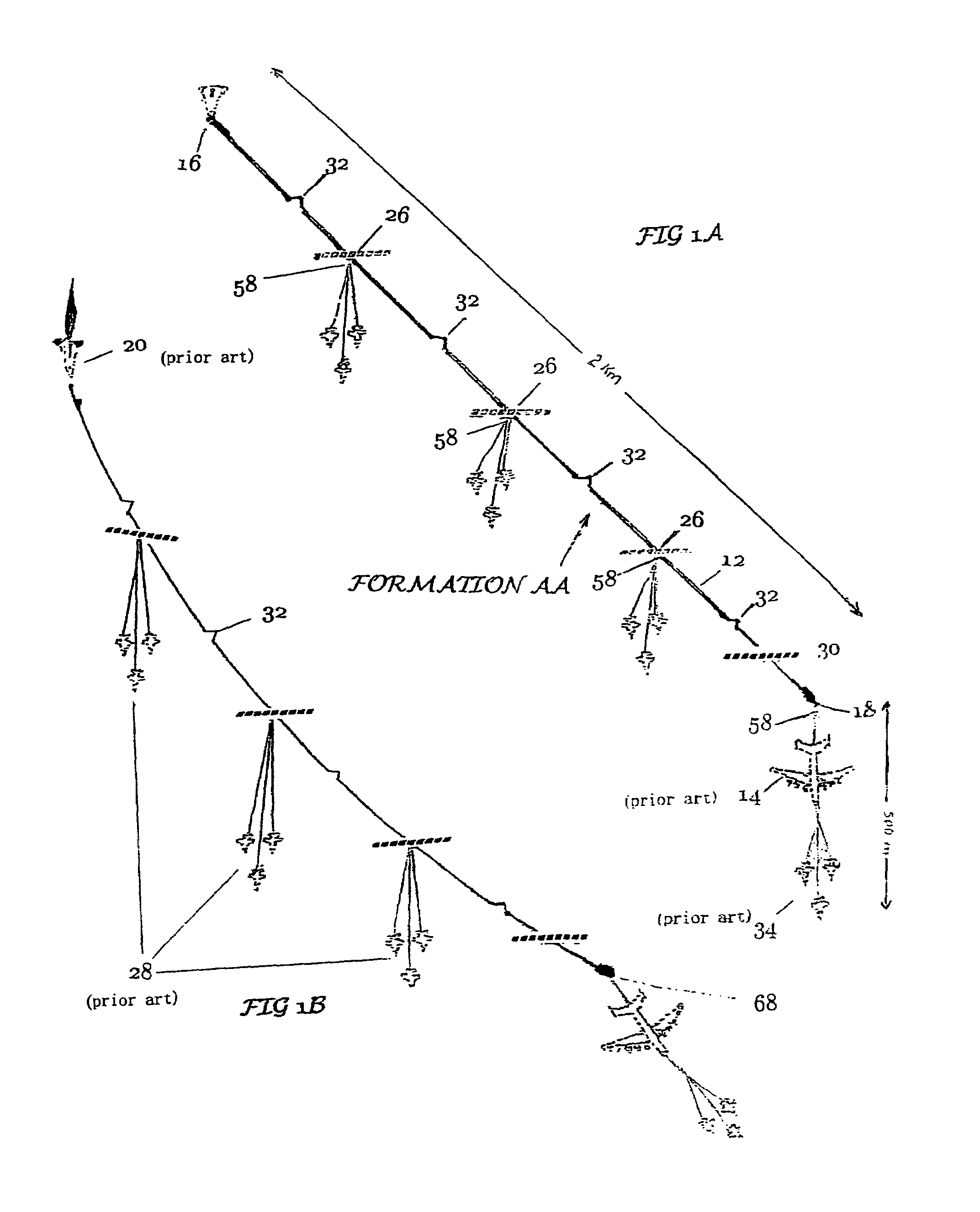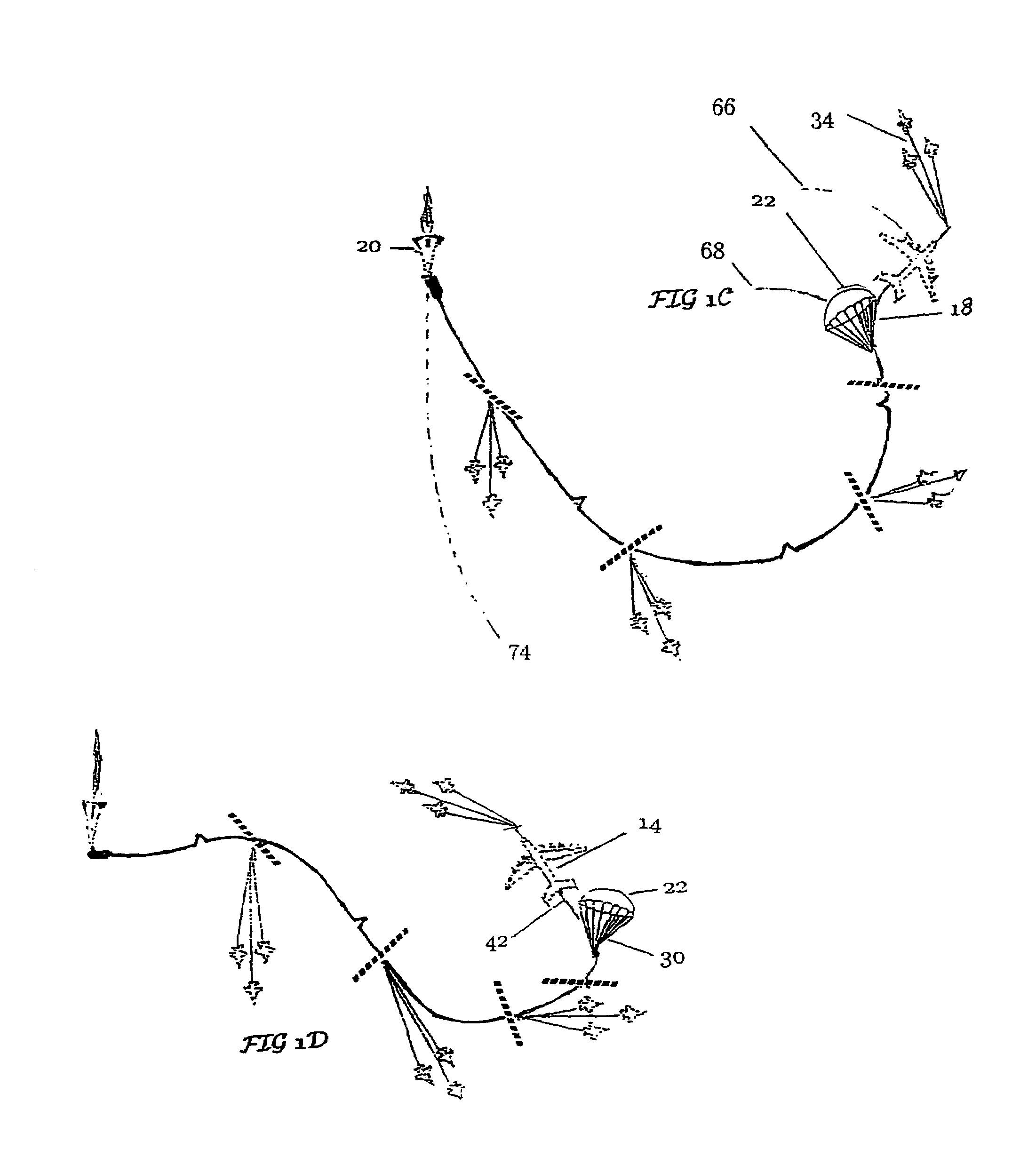Centripetal reflex method of space launch
a space launch and centripetal reflex technology, applied in the field of space launch methods, can solve the problems of increasing the weight necessary to be endured by all lower sections, the potential need for such a seaplane transport in the tsunami tragedy of late 2004/early 2005 in se asia became glaringly obvious, and the effect of enhancing the payload and reducing the cost of payroll
- Summary
- Abstract
- Description
- Claims
- Application Information
AI Technical Summary
Problems solved by technology
Method used
Image
Examples
embodiment — figs 1a to 11
—PREFERRED EMBODIMENT—FIGS 1A TO 11
[0206]FIG. 1A is a top plan view of flight-worthy Formation AA constructed in accordance with the centripetal reflex method of space launch and pictured on a sufficiently wide runway at time T=−10 in takeoff ready mode prior to takeoff roll. Even after takeoff and during the ascension mode the elements of Formation AA will maintain this general relationship to each other, reference logic steps 100-104 in FIG. 2B. Tow pipeline 14 in this embodiment is two kilometers in length and is pictured in abbreviated form to fit the page. Since the angle of presentation that Formation AA makes to the runway is 45 degrees, the runway (not shown) must be at least 1.414 km wide or wider, to accommodate the variables of landing. The length of the runway should be about 4 km.
[0207]Tow pipeline 14 is connected to large transport aircraft 40 by pivot yoke 18. A launch load 20 is attached to fixed end cap 16 by latching mechanism 150. Close by can be seen the first of...
PUM
 Login to View More
Login to View More Abstract
Description
Claims
Application Information
 Login to View More
Login to View More - R&D
- Intellectual Property
- Life Sciences
- Materials
- Tech Scout
- Unparalleled Data Quality
- Higher Quality Content
- 60% Fewer Hallucinations
Browse by: Latest US Patents, China's latest patents, Technical Efficacy Thesaurus, Application Domain, Technology Topic, Popular Technical Reports.
© 2025 PatSnap. All rights reserved.Legal|Privacy policy|Modern Slavery Act Transparency Statement|Sitemap|About US| Contact US: help@patsnap.com



